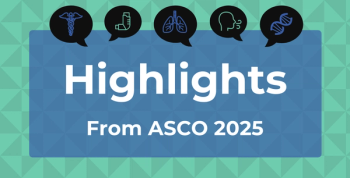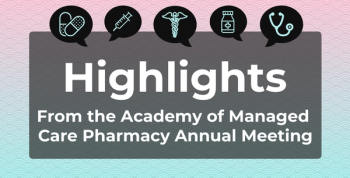
The Rise of Orphan Drugs for Rare Diseases
Since the Orphan Drug Designation program was passed in 1983, there have been over 600 orphan drug approvals, compared to less than 10 the decade before, said Stephen Jung, PharmD, BCPS, manager, drug information, MedImpact Healthcare Systems, during a session at the Academy of Managed Care Pharmacy’s Managed Care & Specialty Pharmacy Annual Meeting.
During a session at the Academy of Managed Care Pharmacy’s Managed Care & Specialty Pharmacy Annual Meeting held April 23-26, in Boston, Massachusetts, Stephen Jung, PharmD, BCPS, manager, drug information, MedImpact Healthcare Systems, provided an in-depth look at the Orphan Drug Designation program through the progress that’s been made, recent changes, and challenges patients continue to face.
The Orphan Drug Designation program provides orphan status to drugs and biologics defined as those intended for the safe and effective treatment, diagnosis, or prevention of
“This program was first permitted to really address an unmet need, and that need is that there was not a sufficient incentive to develop in this area, and with that, that program itself has been remarkably successful” said Jung. “If you consider that this legislation was passed in 1983, since then there have been over 600 orphan drug approvals. In contrast, during the preceding decade, there were fewer than 10.”
Jung highlighted that the number of approvals has increased remarkably over the last few the years. A significant proportion of approvals in 2017 were related to oncology, with PD-1 and PD-L1 inhibitors accounting for several indications alone.
When Scott Gottlieb, MD, was appointed FDA Commissioner, one of the major priorities he wanted to address was the backlog of orphan drug requests, explain Jung. At the time, there were over 200 designation requests under review. In less than half a year, the agency was able to work through the entire backlog. While it doesn’t mean that all the requests were approved, they were all reviewed.
Moving forward, to avoid any further accumulation of backlog, the agency aims to complete reviews within 90 days. “I think you can expect to see the approval pick up some steam,” said Jung.
Jung also highlighted another change stemming from the FDA. In December 2017, the
Jung concluded the session by highlighting issues that patients continue to face when accessing orphan drugs. Payer sensitivity to the cost of orphan drugs continues to rise, with annual costs in the range of hundreds of thousands of dollars per patient and few (if any) available alternative therapies.
As a result, payers have changed benefit designs to manage utilization and spend through several measures: formulary restrictions and specialty tiering, the shifting from co-payments to coinsurance, and prior authorization. An analysis of reimbursement data found that orphan drugs currently have more coverage restrictions than non-orphan drugs, and prior authorization is the more commonly technique used to implement restrictions.
Newsletter
Stay ahead of policy, cost, and value—subscribe to AJMC for expert insights at the intersection of clinical care and health economics.







































